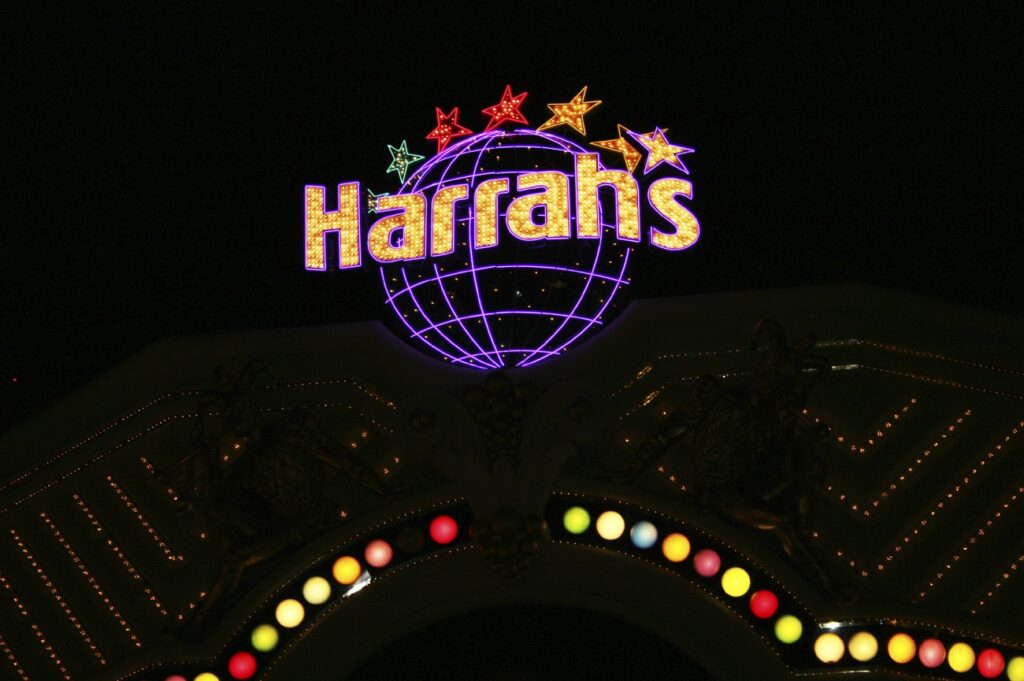Jeremy Galinat is Director, Corporate Benefits at Caesars Entertainment. We talked to Jeremy following Caesars’ win in the Wellbeing category at the 2015 North American Employee Engagement Awards and discussed aspects of the Caesars wellness programme, including the importance of comprehensive and the company’s future aspirations.
Why we think we won the award…
Well, we had a lot of compelling points on our wellness programme, a proven five year track record, tangible health improvements in our population and amazing financial savings. But if I had to just pick one – given this is the Employee Engagement Awards – I would wager our first class participation is what put us over the top.
We had another record breaking year this year with 90% of our membership completing the first phase of our wellness programme and 87% completing the entire programme including those that trigger for condition management.
We believe our employees participated at such a high level because the programme adds a lot of value for them and it has a significant financial impact on their employee premiums.
We think the wellness programme is best-in-class and that’s why we had such a high completion rate.
On comprehension being a key obstacle for most wellness programmes and how we solved this challenge…
So I think we’ve all been conditioned to be sceptical of new and unfamiliar things especially when it involves our health.
People need to understand the ‘why’ behind a programme like this. You can’t simply tell people ‘we want you to be healthy’ – they’re smart enough to know there’s more to the story than that.
And what you don’t tell them they will ultimately fill in on their own. That’s when you’ll hear the conspiracies about the company using the wellness programme to make hiring/firing decisions right.
So you solve that with clear honest information about the intent of the programme.
You say “we want you to be healthy, because we value you and we want you to live a longer, happier life and also because we pay the vast majority of your medical expenses so healthy employees cost the company less which in turn allows us to continue to provide you with high quality benefits year after year.”
When people hear the full story there’s no place for conspiracies and they feel more comfortable and when you’re honest people recognise that, they respect it and they buy into the programme.
On the need for a continual evolution of the engagement strategy and the Caesars approach to continuous improvement…
People get less healthy as we age, that’s just a fact. I found that with annual medical inflation. You get it in increased cost that cannot be left unattended. Wellness rewards and health plans as a whole must continue to evolve and grow in efficiency and effectiveness to respond to these factors.
We constantly challenge ourselves and our vendor partners and our well nurses to be creative and inventive.
Next month, for example, we will be launching a new benefit app that sits on your smartphone. It will include simple written descriptions, videos and contact information for all of our services. It has all of your insurance cards built in and we have the ability to send our employees reminder notifications for things such as wellness reward programme deadlines.
The goal is to increase accessibility, increase comprehension and continue to add value for our members. Here at Caesars one of our core values is to create a caring culture and we feel like we’re progressing that mission with this new product and with the wellness reward programme as a whole.
On the types of technology used to help communication and uptake…
It’s really been very grass roots; we challenge our well nurses to engage with the population of their property [Caesars location] however they see fit.
We have resorts all over the United States and each one in each region is going to have its own kind of unique culture. Some folks may be more accepting of doing things over the phone while others may want to meet with the well nurse in the employee dining room.
So we kind of leave that up to the well nurse to determine what the best avenue is to take.
I think everyone today has a smartphone – it’s another tool in the toolkit to increase the value of the health plan for our employees and make it that much easier to get the services they need and understand.
This will hopefully help them maintain the visibility of the reward programmes. We can send out the notification reminders to folks. The reality is even though the programme is five years running and the population is very familiar with what the deadlines are, if they’re having a busy month or whatever, something could slip by.
But if we send out this, it’s one more useful reminder to folks which should lead to an increase in participation.
On keeping momentum going when you’re five years into an engagement programme…
I think the key to maintaining momentum is communicating your success. To do that you must have the capability to segment your data and generate meaningful reporting.
Thankfully our medical care senior does an exceptional job of identifying just how much better off the wellness reward participant is compared to a non-participant, both from a health risk prospective and a claims cost perspective, and then you have to disseminate that information throughout the organisation. You need to be a cheerleader for your programme.
When other leaders in the company understand how beneficial your programme is to the firm as a whole they will promote it and continue to drive participation within their areas of influence. At Caesars we call it storytelling.
On the evolution v selection of natural engagement programme ‘champions’…
It’s a little bit of both. We do have a more formal intranet where there is a storytelling board.
We also have formal HR leader telephone calls where HR leaders at every property around the country come together once a month with corporate HR to talk about the programme. This isn’t exclusive to wellness rewards but HR in general and benefits and wellness are always parts of the conversation.
So everybody’s always well informed on what the status of their property in the programme as a whole is and they then take that information and promote it. We do have a formal storytelling newsletter whereby individuals who have had remarkable success within the wellness programme and want to tell their story can step forward. It’s completely up to them but it’s a great factor in promoting it.
The crucial thing to remember when starting a wellness programme…
We all know starting is the hardest part and generally people are resistant to change so that’s when you’ll hear the most noise from your employees so this is when the communication burden is the heaviest.
Specific to a wellness programme you will absolutely see a spike in claims experience. As members engage in a wellness programme they will discover existing health problems that need to be treated, so people may be seeing a doctor or specialist for the first time and they’ll then begin taking the medication.
The reality is this is all proper utilisation; as a health plan you want this type of utilisation as it prevents further future expenses, such as ER visits and in-patient stays.
However it’s important that executive management understands and expects this and supports the view that any wellness programme is a long term investment.
On building momentum and awareness over time…
Participation has definitely grown over the life of the programme. We’re at 90% participation now – there’s not a tremendous amount of improvement that can be done there but I think we’re up 1% year on year.
We came out of the gate pretty strong and then we did see some significant increases in to year two and to year three and now we’ve kind of reached that high water mark. The challenge now is to maintain numbers and maybe squeeze out another 1% or 2%.
On having a clear sense of success should look like…
As long as it’s realistic and it’s in line with the design of the programme it’s a great idea. People who exclusively do wellness programmes will tell you any programme that is voluntary or does not have a significant financial incentive behind it will get very low participation.
So if you’re hoping to reach 90% and it’s a voluntary programme that doesn’t have financial addendums it’s just, it’s not realistic.
You need to be absolutely clear on the problem you’re trying to solve.
On what’s next for Caesars in terms of wellness and employee engagement…
We host an annual conference for all of our well nurses around the country here in Las Vegas. The conference kicks off next month and each year we address this topic of pushing the programme forward.
We always want it to have a bigger, better impact on the lives of our employees so this year we’re going to ask our nurses to focus more time and energy on the employees that need them the most, the challenging cases including those that may not be engaged in the wellness reward programme.
So we’re going to be having workshops and breakout sessions that are specific to this and address how to break through these potential barriers. We recognise 90% engagement is fantastic but that still leaves 10% of our employees that we could be helping and driving additional performance.
With that 10% do you sort of identify any particular consistent challenges in terms of reaching those people?
Not really. We have asked, for example, if there are particular Caesars locations, or particular departments, that have lower uptake, but it’s actually pretty spread out.
Understanding that employees may have other things that they’ve got going on in their lives is important. If they trigger for condition management and their personal lives don’t facilitate the time to get through the programme, that’s something we may look out for.
You’re always going to have situations like that that arise so 100% is probably not realistic but we don’t see any particular pockets where we necessarily have a problem but that is something we’re always examining.











